"Divergence as a Continuation Pattern" is a great example of an oxymoron, as the concept flies in the face of what divergence actually means. I mentioned in the UFO/POPS article that the removal of a value of the RSI brought up such examples. In truth, it was completely by accident, but what rapidly became clear was the fact that its use as a continuation of the trend could be incredibly powerful. Armed with this unexpected bonus, I then began the process of trying to build other, more sophisticated patterns, with the premise that, for it to be a true exponent of the theory, it still had to have uses in the traditional sense.
Time Continuation is the study that achieves this and, of all the multitude of divergence patterns I have built, this is the most complex, aggressive and frequent. It is also is one of the few indicators for which I keep the exact method to myself due to its uniqueness. What I will say is that it links multiple relationships of price (Open, High, Low, Close and Mid) over a fixed lookback period and connects that to a variable Lookback of Time (think Time Average Band Theory), and then smooths it in order to create crossover reference points. It is this and the variable level of aggressiveness that is dependent on the recent price action that creates the continuation function.
I have mentioned many times that established mantras in the world of technical analysis often have obvious issues that are not addressed or qualified sufficiently, and little is done to remedy this in order to both identify any limitations and then, more importantly, create ways to take advantage of (or change the dynamics of) what can actually be done with the theory. Divergence is no different. The mantra of divergence is like a straightjacket. In an uptrend, it is always the high that is linked to the indicator of choice, which 99% of the time will be calculated through the close. The illogical nature of this method escapes many. There are many reference points to any one bar, of which an indicator can be used in the same way or compared to different relationships to price. The High of the Bar to the Close of the indicator is simply one relationship. If you open this up to the 5 previously mentioned values of price and do likewise to the indicator, you now have 25 relationships.
The chart below on Tesla (TSLA) exemplifies how the use of multiple relationships of divergence allows you to know how powerful that divergence is by the number of qualified relationship patterns. The buy signal last year fulfilled four relationships, while the February sell fulfilled three. Note how the weekly resistance (black line) moved to the top just before that signal appeared.
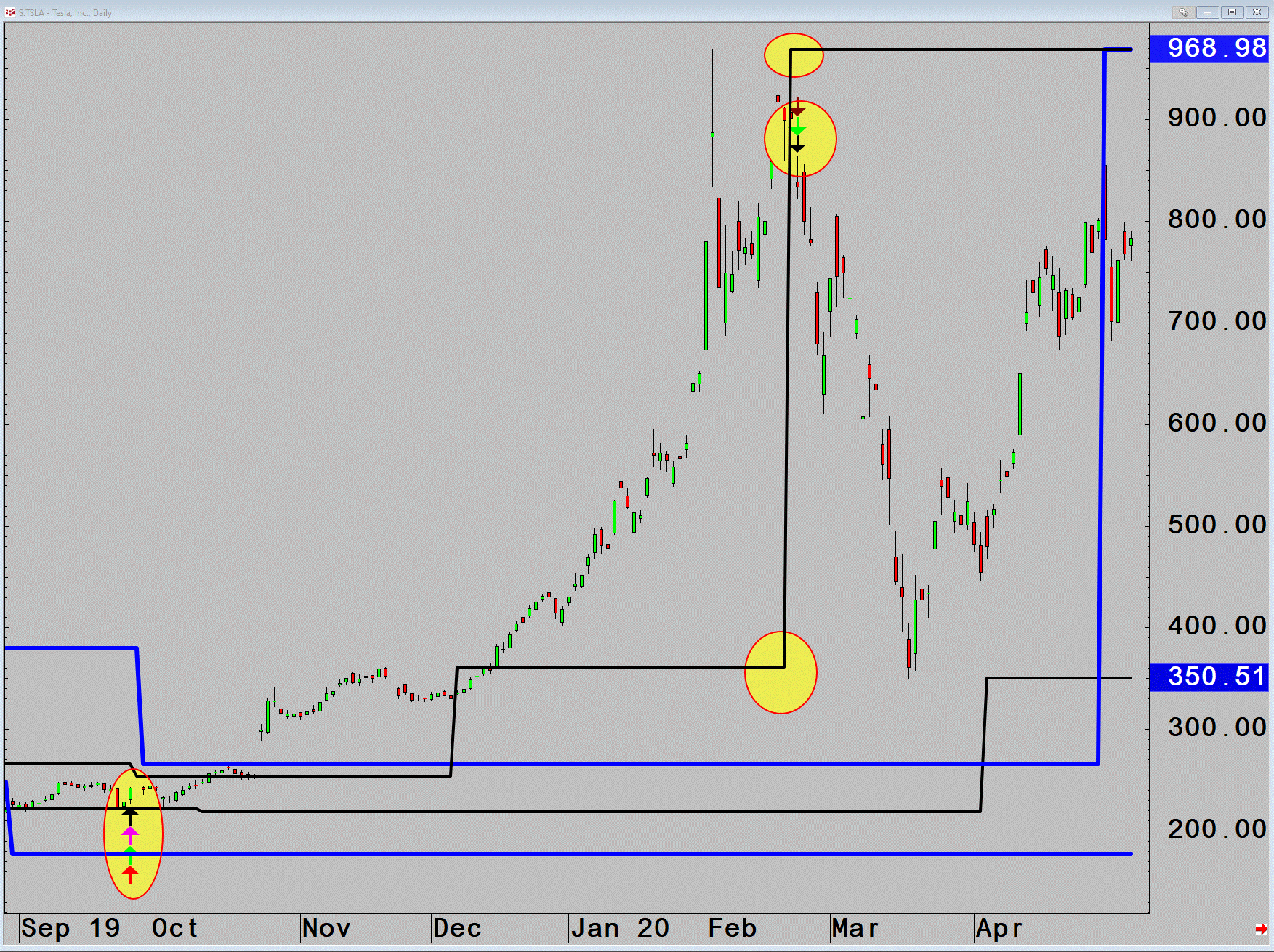
Those signals represented traditional divergence, but the Apple (AAPL) chart shows that, by removing the mantra-based straightjacket, divergence as a continuation becomes possible as buy signals appear when the trend is quite obviously up.
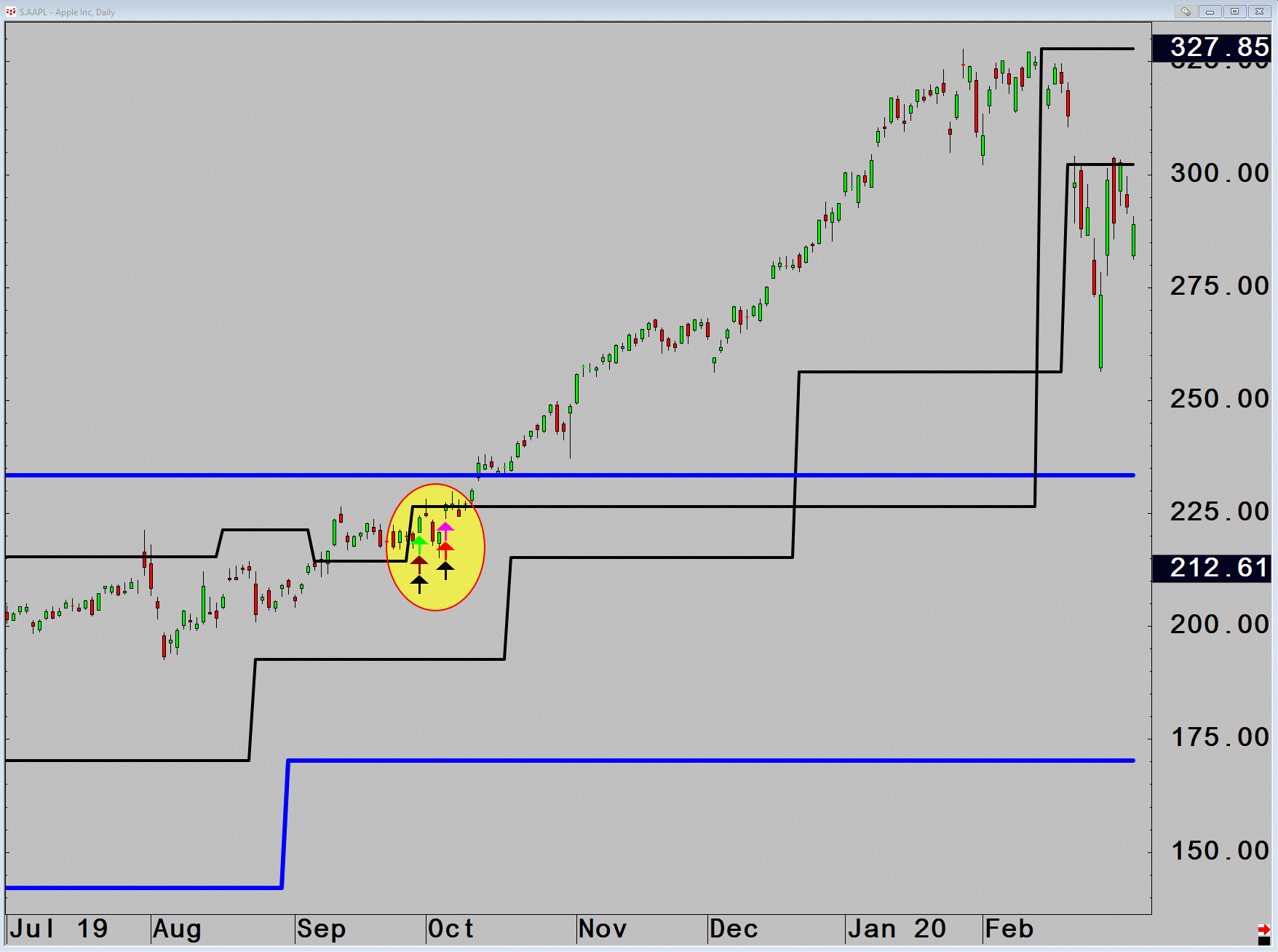
Dependence on the indicator and the variables used dictates how aggressive the signals can be. The nature of the MACD means that it is slower than studies like the RSI or Stochastic. This means that signals will never be picking an absolute high or low, but still have uses. On Zoom (ZM), the first buy signal was true through 5 relationships, so it was very powerful. The negative signals had limited power, but the final buy signal as a continuation could be further qualified by the expansion of Range as price closed above the 3rd Deviation of the Range Deviation Pivot. This indicates an expansion beyond the norm of the past 22 days and, with the MACD having no reference value to what is overbought or oversold, means that Divergence as a Continuation Pattern can occur.
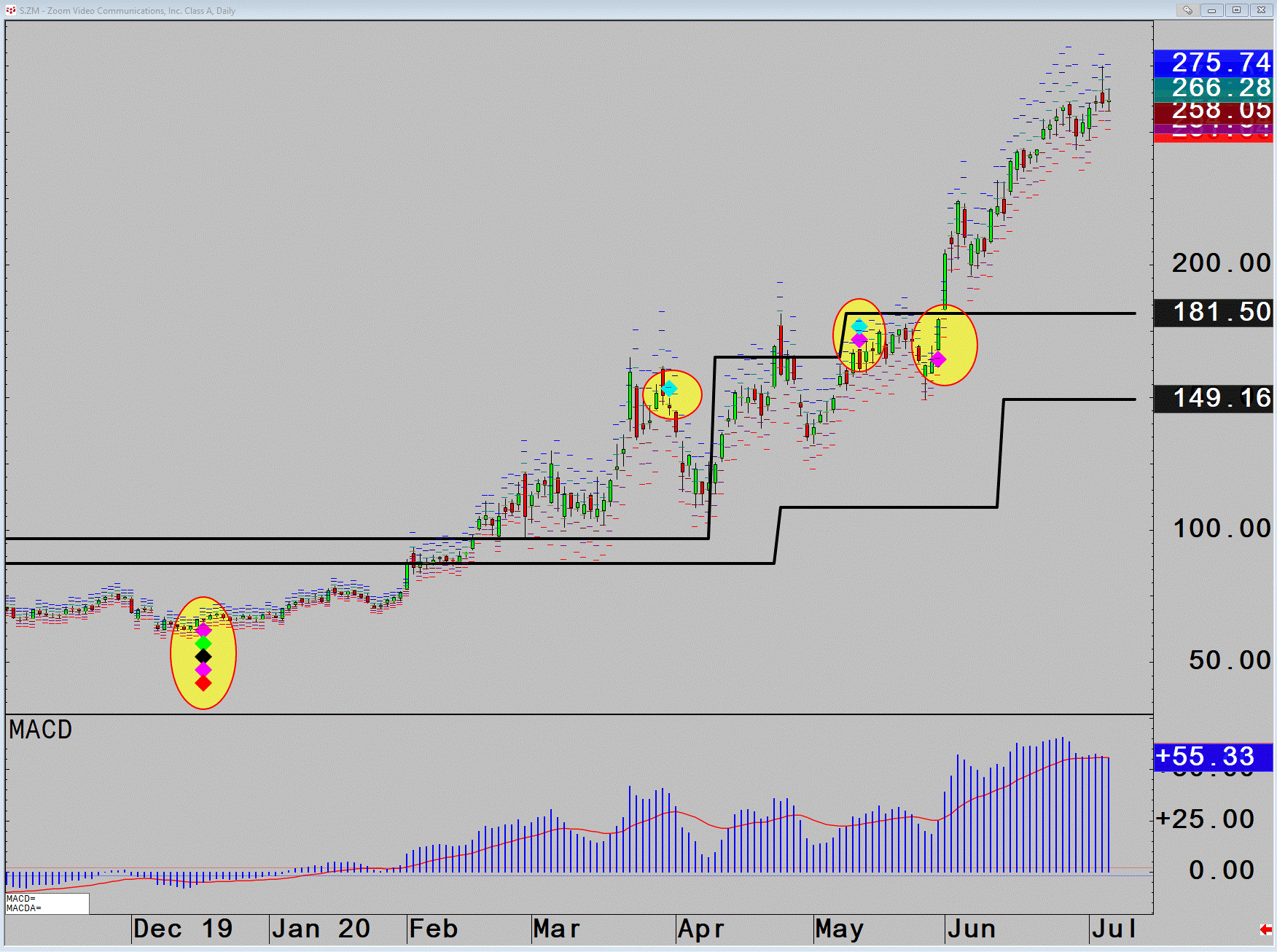
On StockCharts, Time Continuation has the option to only observe signals that fulfill the expansion-based criteria, with the pattern being highlighted by a green or pink diamond. This is shown on Zoom, where a Buy as a Continuation appeared.
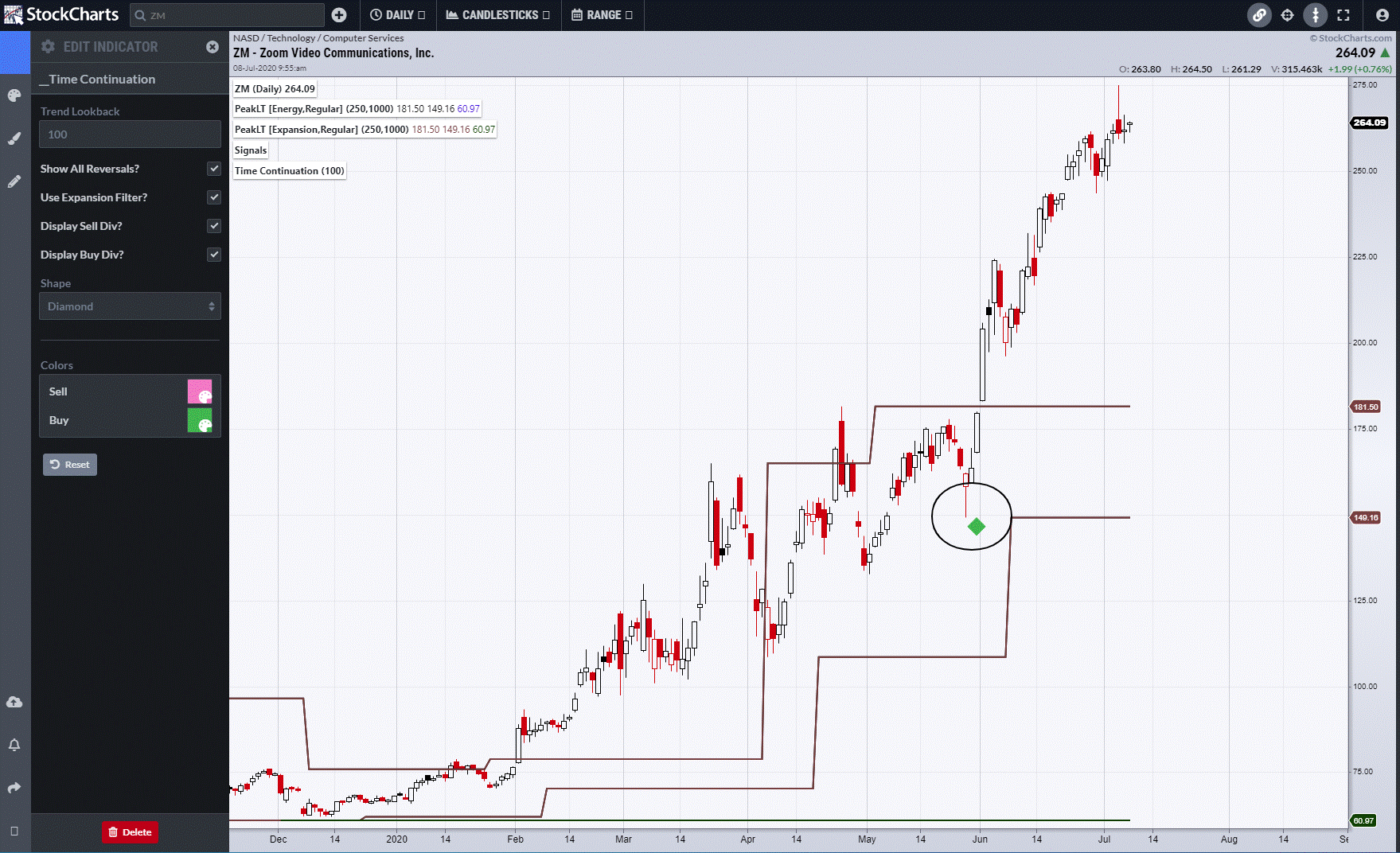
As stated previously, Time Continuation is the most frequent of the 4th Dimension patterns. The main reason for this is because, in order to get divergence as a continuation with the same piece of code as is traditional against the trend divergence, it must be aggressive so that there is a higher chance of getting the former, more desirable pattern. This means that divergence against the trend is usually simply a warning sign and not necessarily a call to action. In a similar vein to UFO/POPS, Time Continuation must be connected with other studies within the suite, the obvious being Expansion and Energy. Looking at Apple, there is only one signal that appears near support or resistance as circled. Remember that this was the day after Volatility Time Bands, Time Volume and Range Deviation identified a low-risk buying opportunity. The emergence of a Time Continuation the following day gives further confidence. Of the two positives prior to that, the first was leading straight into resistance and the second had no close reference points.
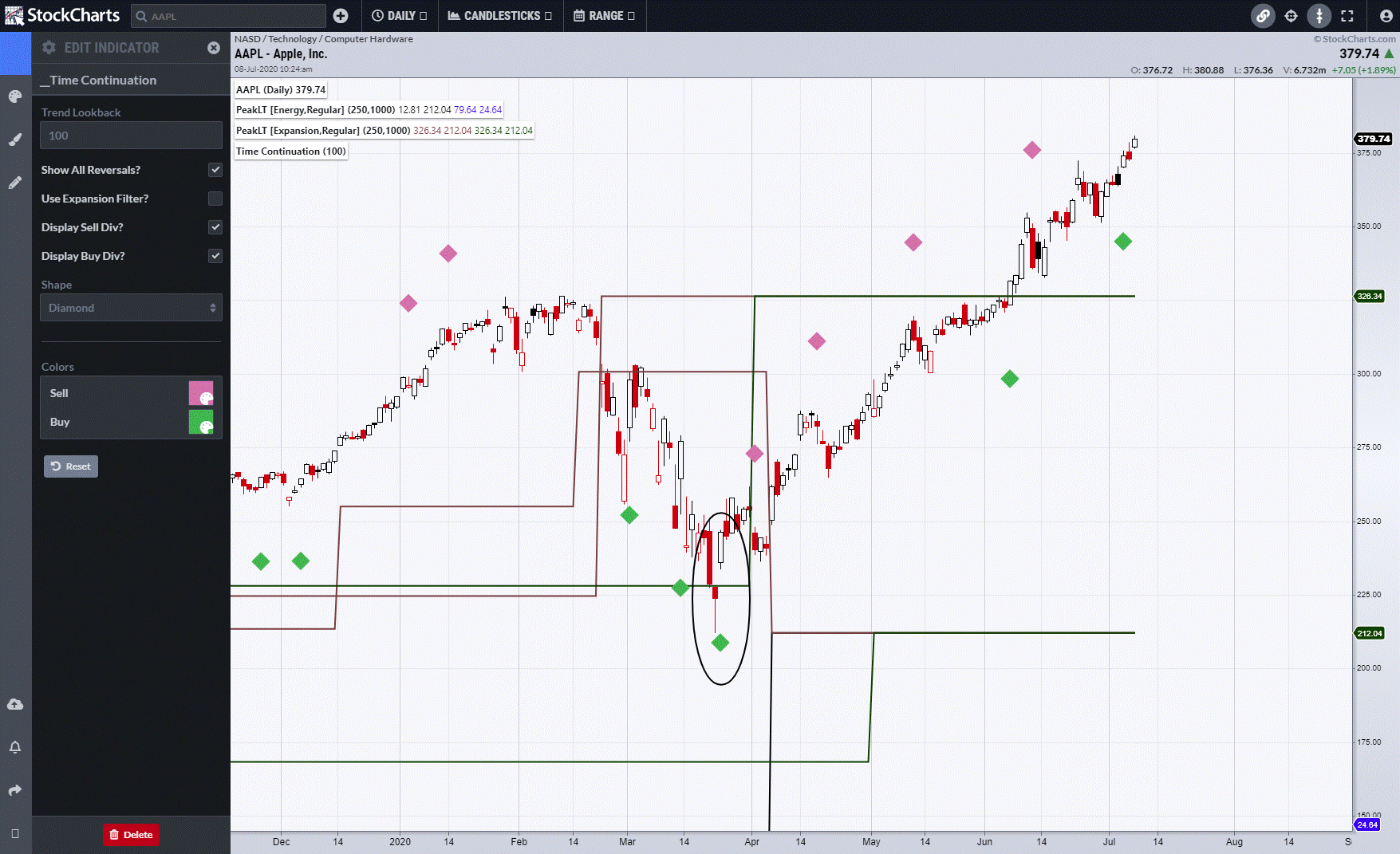
Therefore, Time Continuation is an integral part of the study that forms what is the 4th Dimension's Signals. This amalgamates all of the patterns and code I have written about in previous weeks and links them to Expansion and Energy support & resistance points in order to create potential entry criteria. Once activated, it uses uses all of those studies and code once more to provide multiple profit-taking opportunities. Range Deviation Pivots computations provide the initial stop-loss point (pink line), with extra money management tools in the shape of a User-Defined Trailing Stop (brown line) and Break Even option.
Positive signals are defined by a Blue Triangle, which sets off the sequence; you have the ability to set what percentage away from any pattern needs to be in relationship to the Expansion or Energy point. Apple shows how the recent breakout Buy was triggered by the Time Continuation pattern.
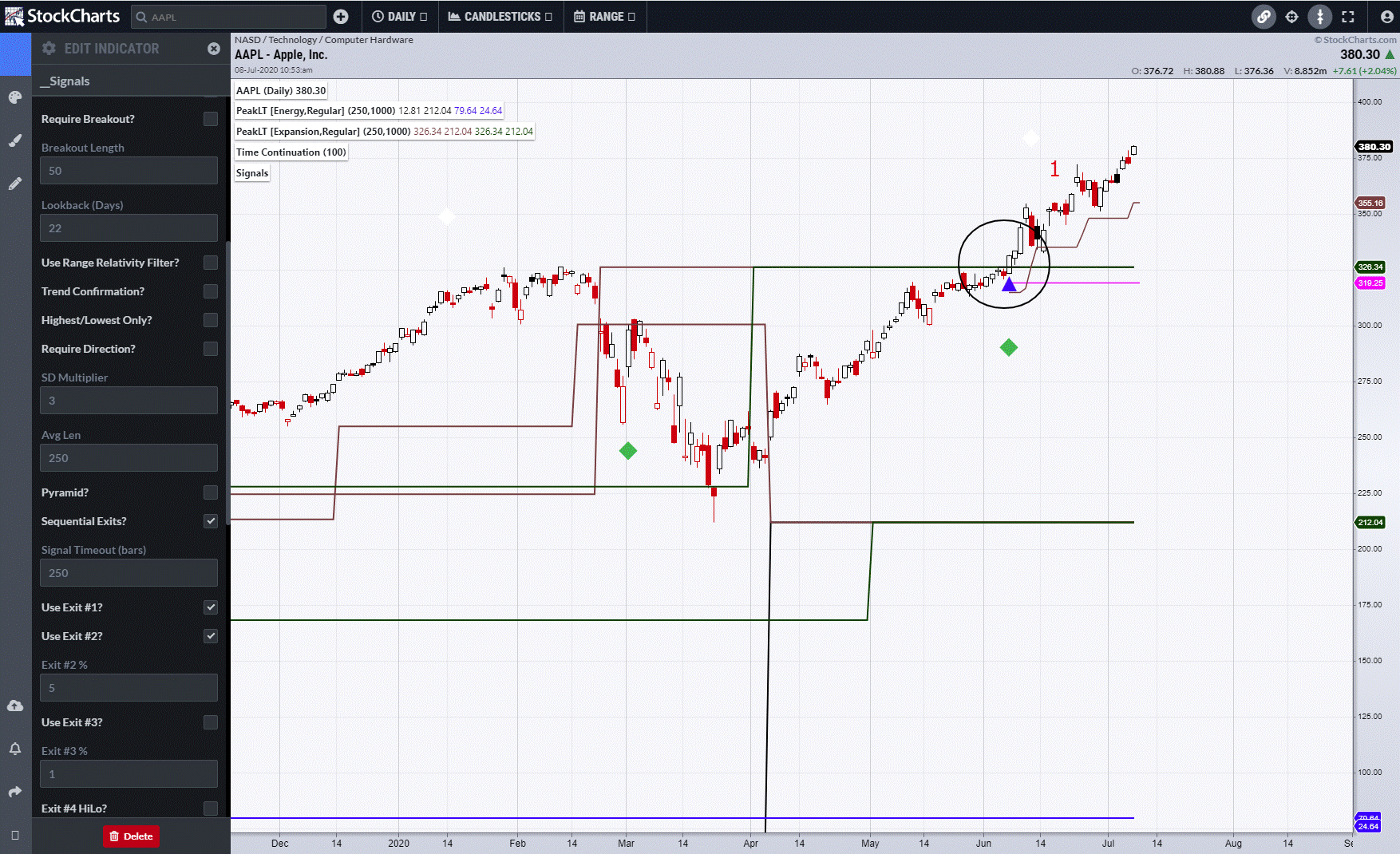
Exit criteria are defined either in a sequential red number-based format, the chart showing that the 1st potential partial exit point occurred two weeks after the entry, or as the name of the study that triggered it. In this case, it was Peak. This allows for you to then go to that indicator for further analysis if you so wish.
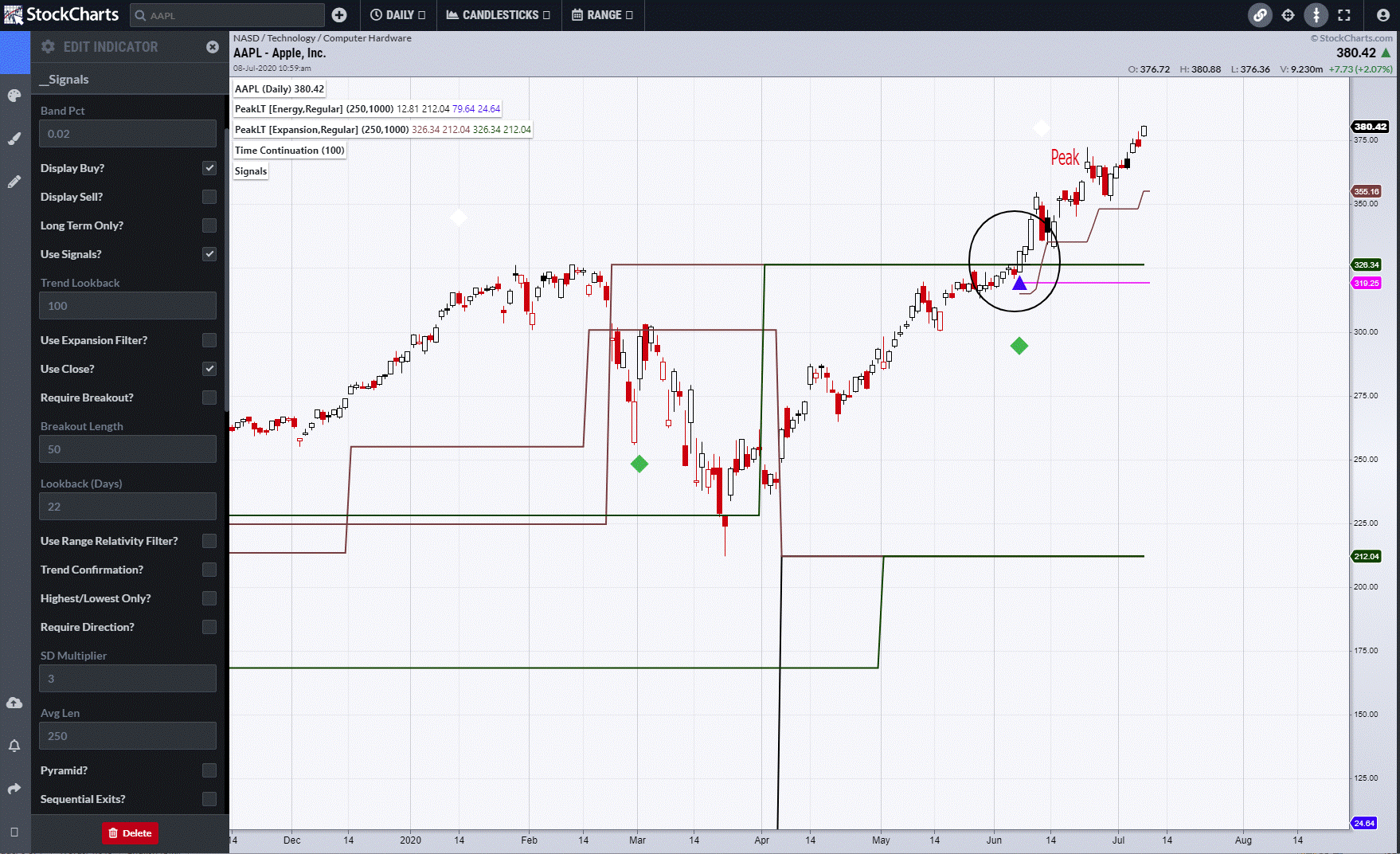
The charts below shows a trade sequence on Microsoft (MSFT) that ended at Exit number 7 when the trailing stop was activated.
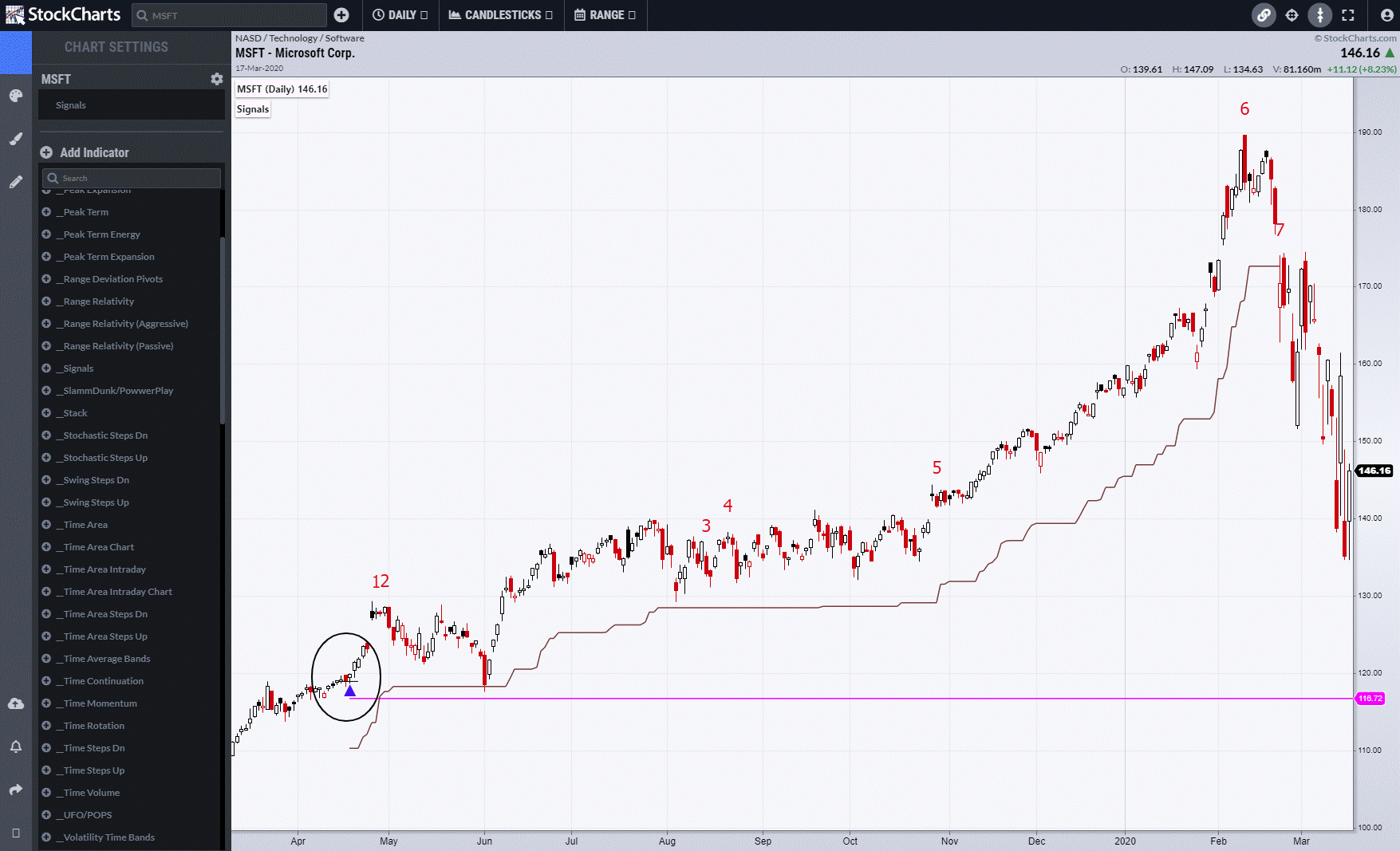
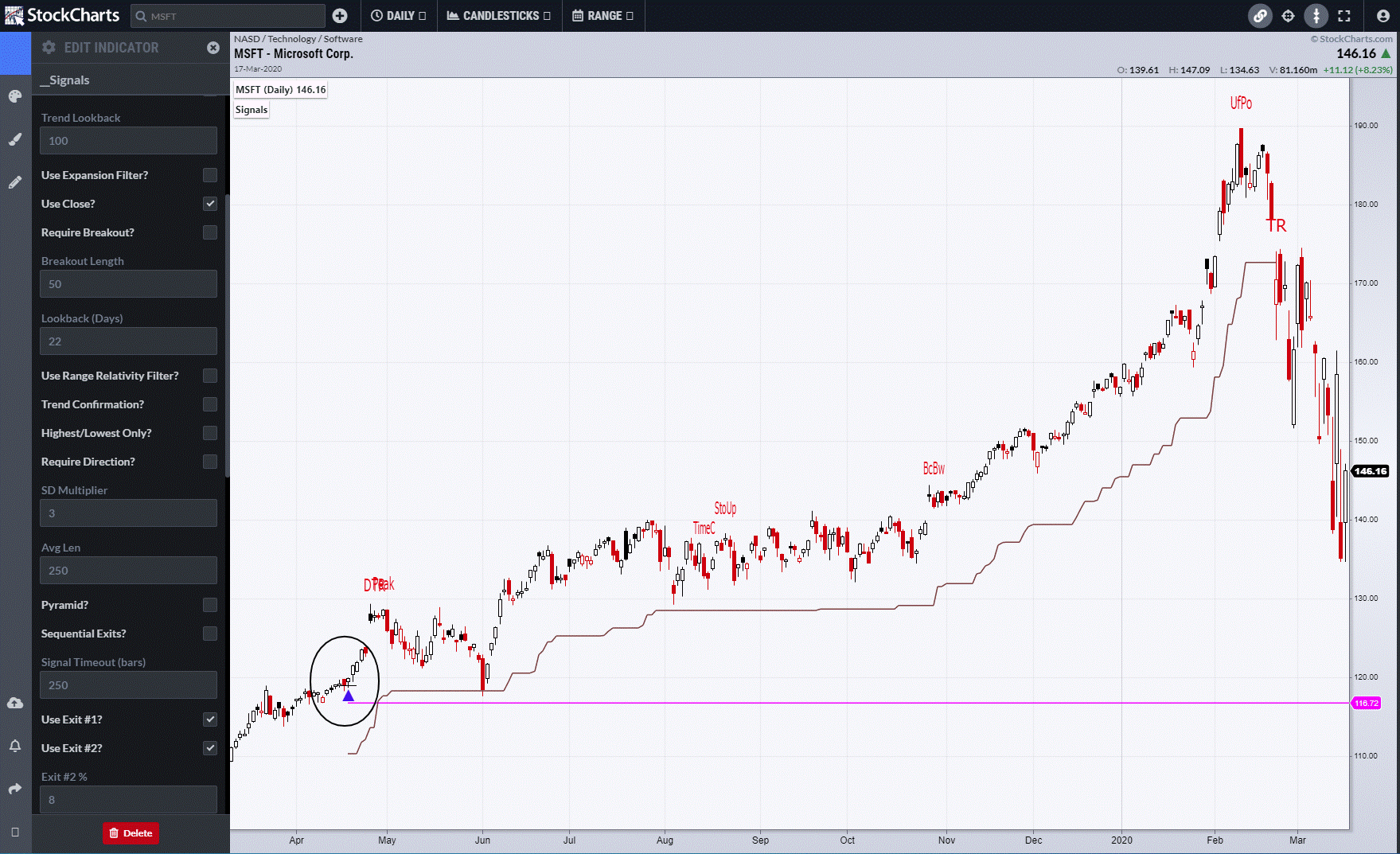
In the weeks ahead, as we prepare for launch, we will look at the 4th Dimension Signals study in greater depth.
I can be contacted at shaun.downey@aol.com to answer any questions.
Shaun Downey
